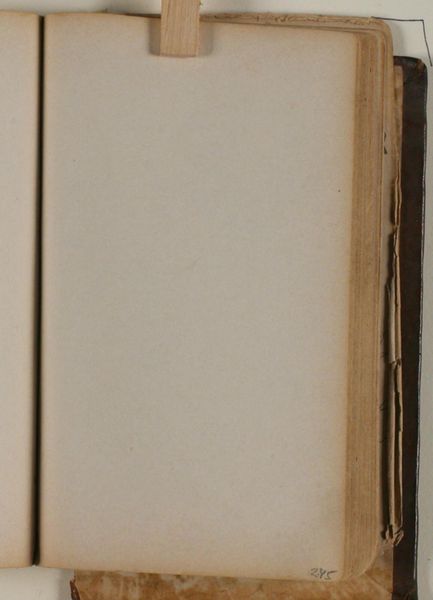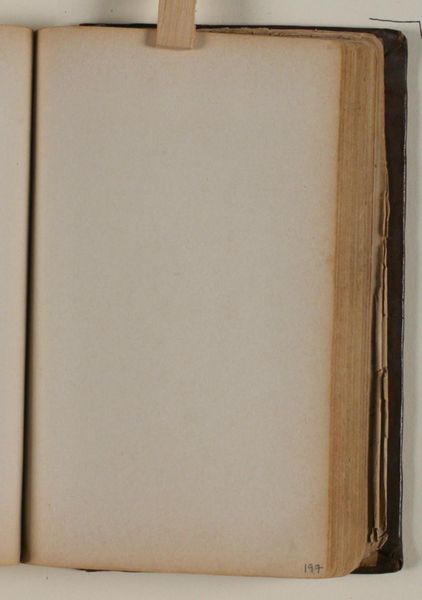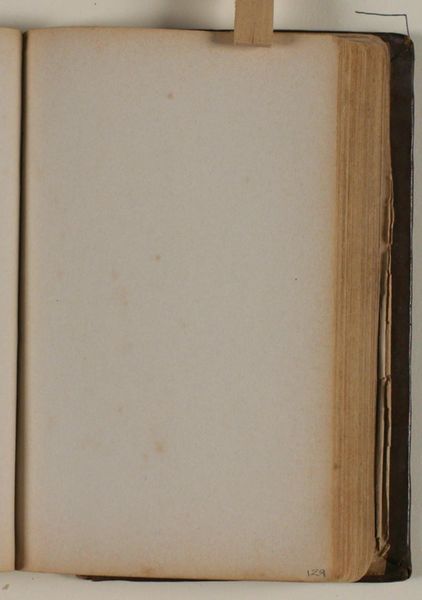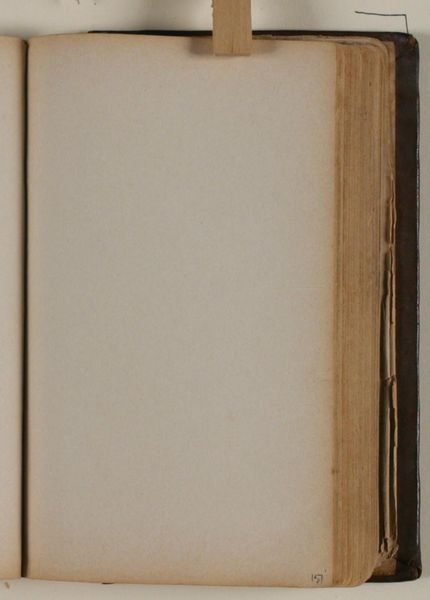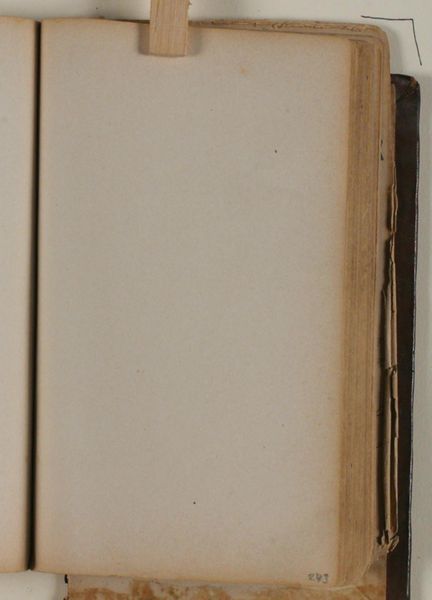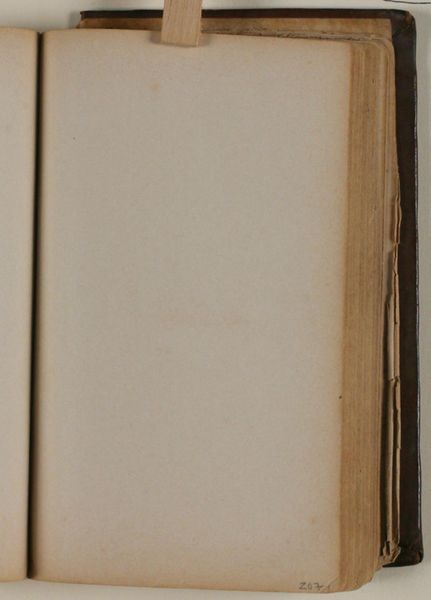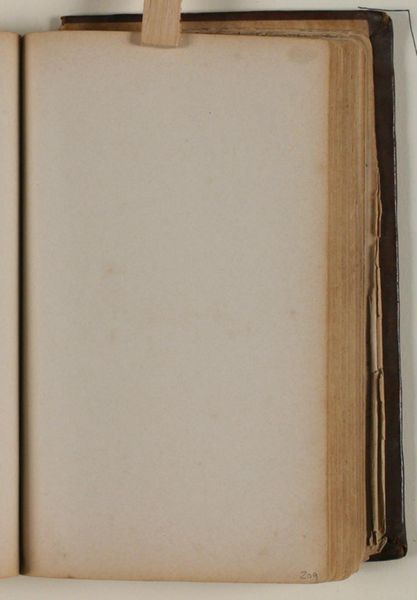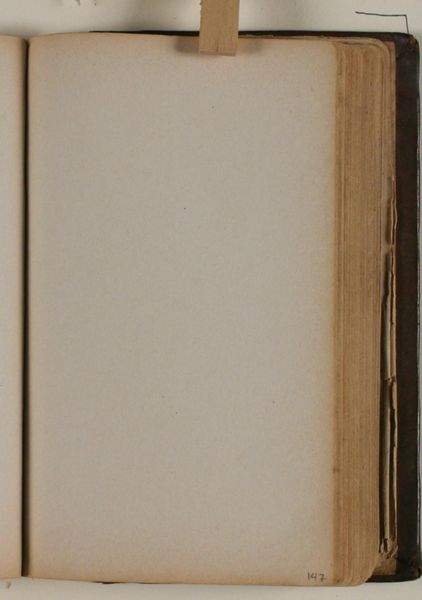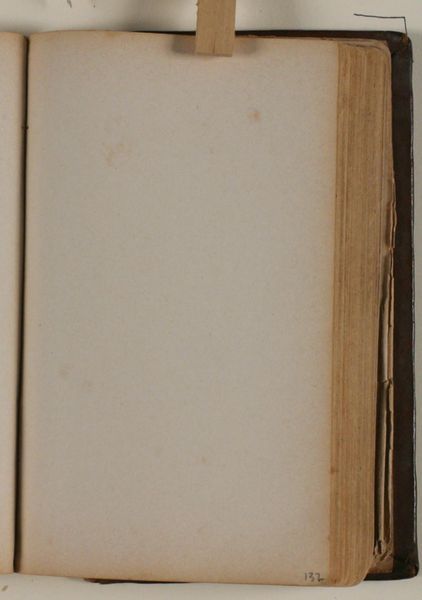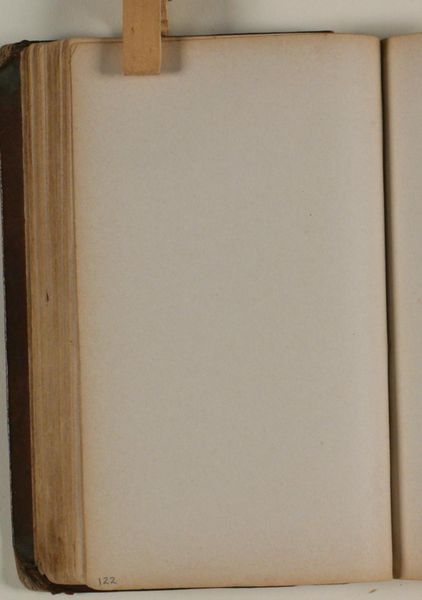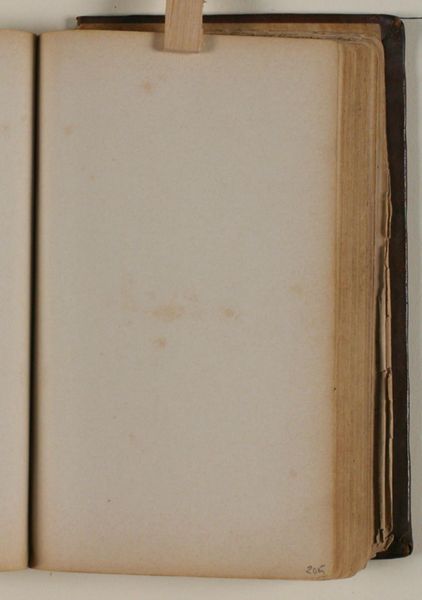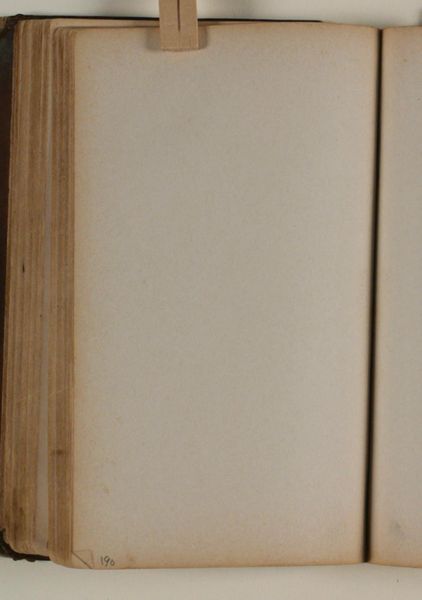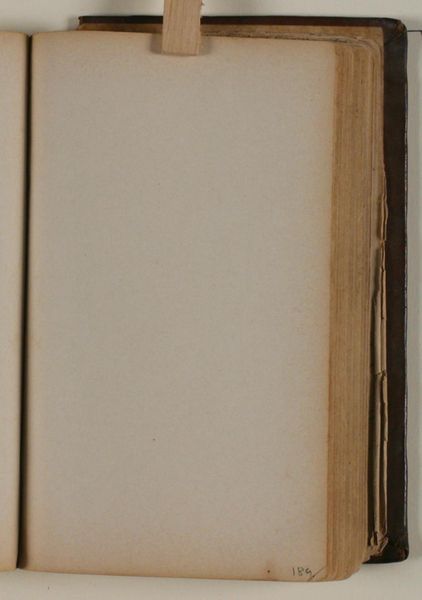
drawing, paper
#
drawing
#
paper
#
watercolor
#
monochrome
Editor: We're looking at "Blank," a drawing on paper, likely with watercolor, by Niels Larsen Stevns, made sometime between 1864 and 1941. It's just… an open book, seemingly empty. What statement could he possibly be making here? How do you interpret this work, especially considering its potential historical context? Curator: It's tempting to dismiss "Blank" as simply that—blank. But as a historian, I find myself drawn to the power dynamics inherent in the presentation of nothing. Who decides what gets filled, whose stories get told, and, crucially, what remains invisible? Consider the socio-political landscape Stevns occupied. What unspoken rules or censorship might he have been navigating? Was "blankness" a form of quiet resistance or a commentary on the limitations imposed on artistic expression? Editor: So you’re suggesting it's not about the absence of something but rather the presence of enforced absence? Curator: Precisely. The art world and its institutions often prioritize certain voices, certain narratives. An empty page can be a potent symbol of the marginalized, the unheard. Think about the Danish cultural scene at that time – who had a voice, and who didn't? What societal norms dictated what could and couldn’t be depicted? Editor: I hadn’t considered it that way. It makes me wonder, what did exhibiting this “blankness” mean to viewers at the time? Was it provocative or easily overlooked? Curator: Its reception likely varied. For some, it might have been a subtle jab at the establishment. For others, a mere curiosity or even a failure. The power lies in its ambiguity, allowing viewers to project their own experiences and interpretations onto its "emptiness," prompting them to consider what’s missing and why. Editor: I'll definitely look at "Blank" with new eyes now, thinking about the cultural silences it might represent. Curator: Indeed. It's a reminder that art doesn't always need to fill a canvas to make a powerful statement. Sometimes, what's left unsaid speaks volumes about the world in which it was created.
Comments
No comments
Be the first to comment and join the conversation on the ultimate creative platform.
